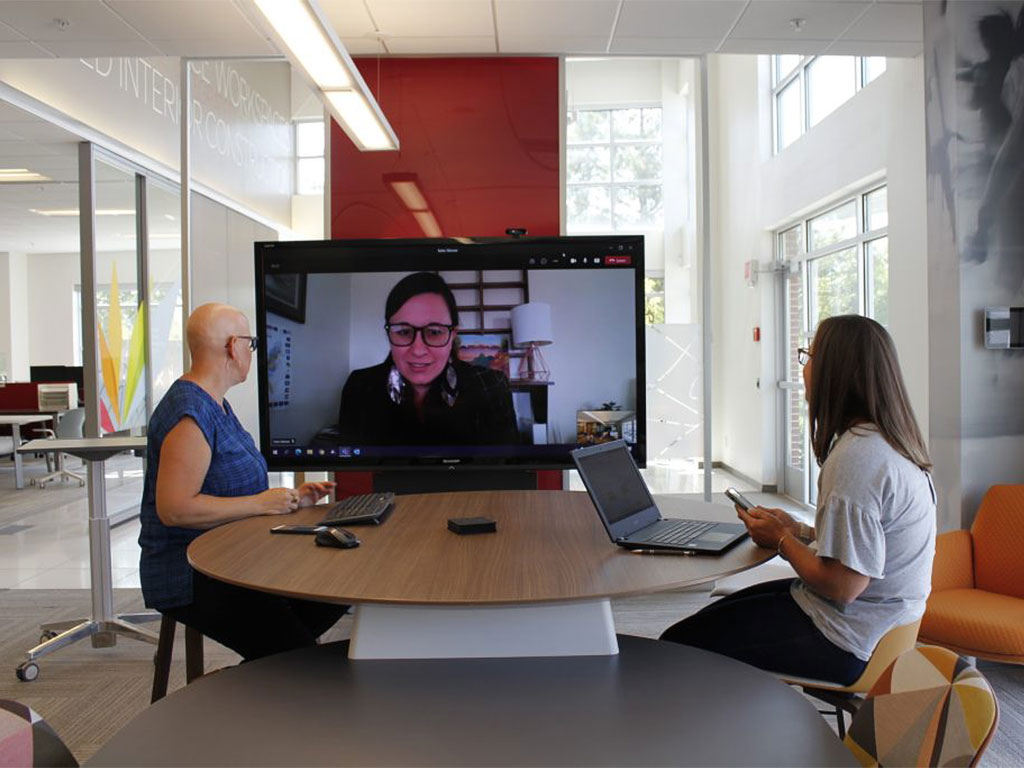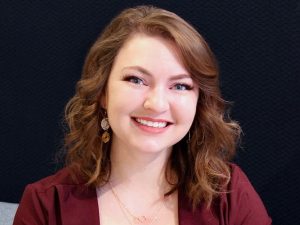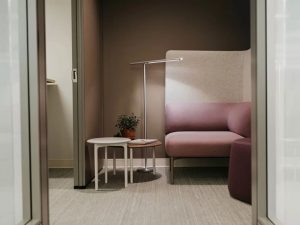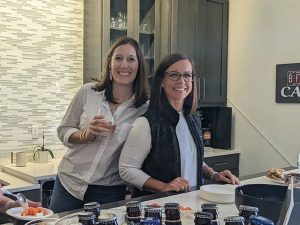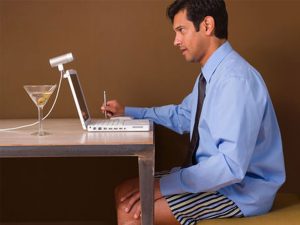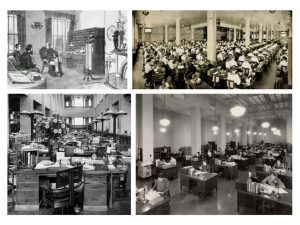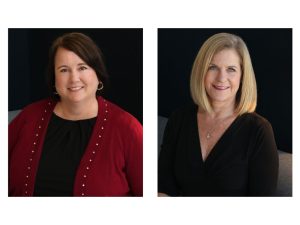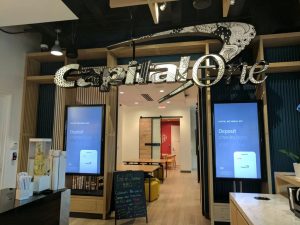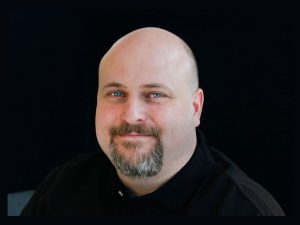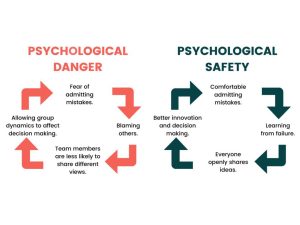Before the pandemic POE offered a very typical office scenario with members in the office 5 days per week 8 to 5. The technology used was one factor that limited members to working only from their assigned desks. “Being on the phone meant being at your desk because we all had desk phones. It could get loud sometimes and distracting, but that was just a normal day at work” says Sandy Halley, Director of Government and Education. Nicky Wesemann, Design Lead said the biggest pain point of the office design was not having enough collaboration spaces. It became normal to have meetings at workstations which could get a little chaotic for individuals who were not part of the meeting but seated near-by. “Don’t get me wrong, the employee experience(EX) was still great” says Stephanie Wiltse, Project Coordinator. “We had welcome breakfasts and happy hours – the people here are all wonderful and I have always felt so welcomed.” Overall POE had a positive EX for what was typical before March, 2020.
When the pandemic hit, POE leadership stepped up in an amazing way by being incredibly agile and providing all members the technology needed to be successful in a remote environment. “POE was really good about making sure we all had good home office set-ups and had the resources we needed” says Nicky. Members felt emotionally supported with leadership or other members calling just to check in on one another. The “Vibe Tribe” – the team of members in charge of internal social events – was instrumental in helping POE hang on to their collaborative culture through the long-term separation. Leadership and Members really embraced the use of Microsoft Teams to stay connected and Stephanie believes it was really an instrumental piece of software. The way that POE was able to shift so quickly and manage to support their employees provided for a big boost to the perceived EX.
POE is now on a hybrid framework and the office has been remodeled to support it. Stephanie says “the office redesign with the added collaboration spaces and pop-in rooms has been really essential to the type of work we are doing. We get positive feedback from clients as they are inspired by the space and it helps them think about their own workspaces.” Working remote carries the connotation of being in a separate place from the office, however, now that members use their cell phones and have laptops it provides freedom to work remotely within the office. Employees can work from anywhere in the office space that supports the work they are doing that moment. “It’s great coming to the office knowing I can work outside or go into a private room for a phone meeting” says Sandy. “It’s great to always have a change of scenery”. POE has proved with our office renovation that the physical space is a big factor in supporting a positive EX.
One thing that has given the greatest rise in EX has been the flexibility of hybrid work. Employees absolutely love the ownership they have over their schedules and the trust they feel from leadership to get the job done outside of the traditional work hours. In fact, Stephanie says that she feels so good about it that she comes into the office more than required just to be around her co-workers and leaders. “People are doing well at managing their schedules and there has been great collaboration on creating in-person meeting times that work for everyone”, says Nicky. Everyone concurred that employees feel more relaxed than ever before which has created a more fun and vibrant atmosphere ripe with creativity.
Employee Experience is an ever-moving target and is unique to each individual. Organizations have the power to strive for better EX both in an abstract way and a tangible way. According to a recent study by BetterUp, high EX workers had 28% higher productivity, 37% lower turnover intentions, and 142% higher net promoter score. It pays to focus on EX. The rest of this year POE will be focusing on how organizations can reach their EX goals by focusing on their culture and creating human-centered spaces. Stay tuned!

